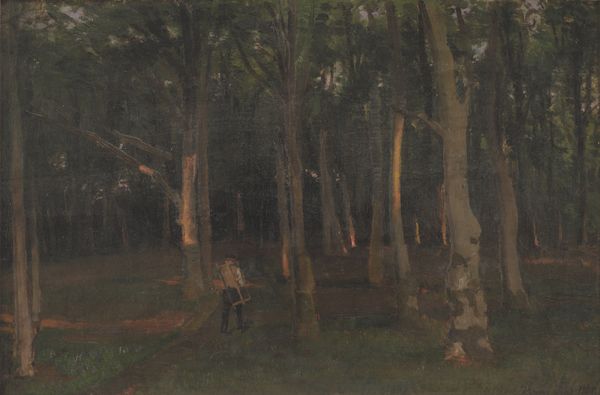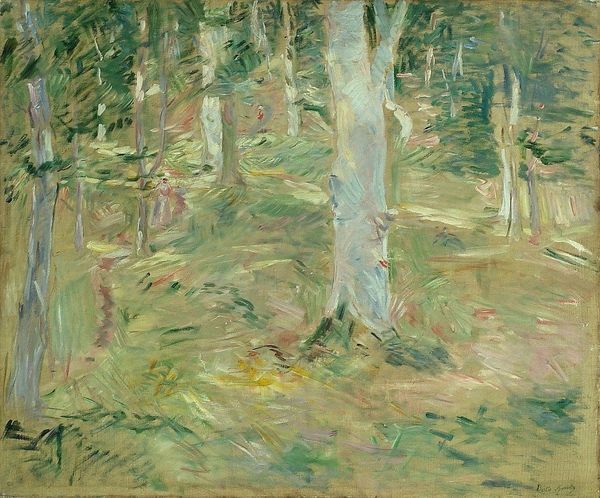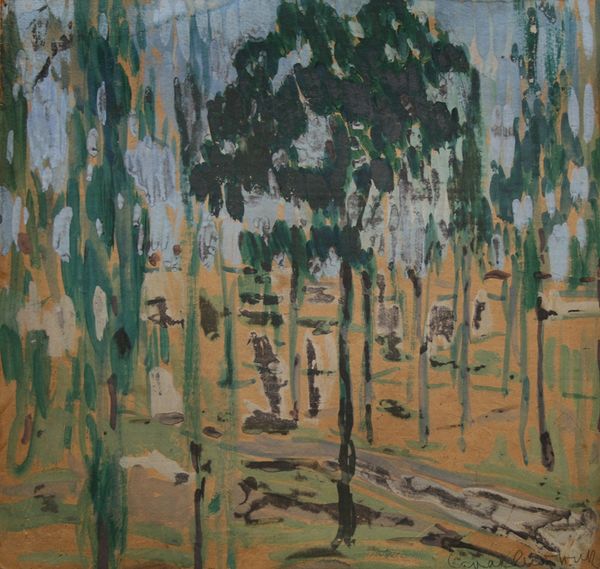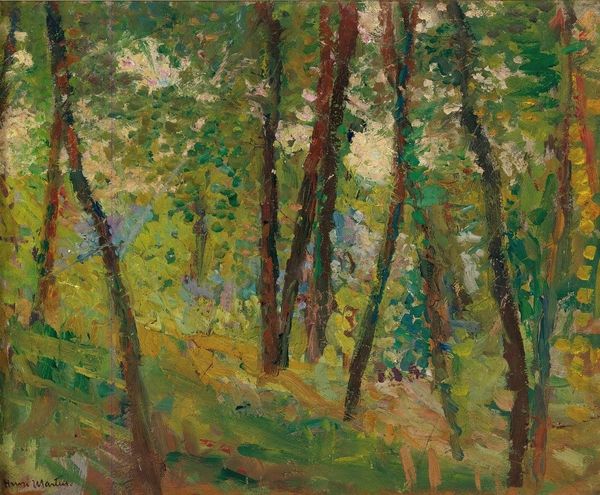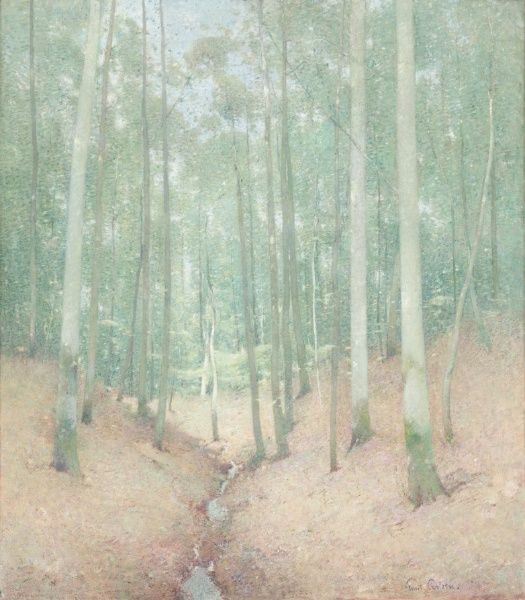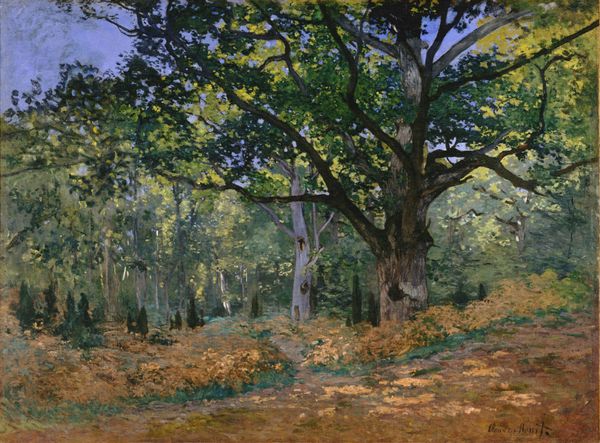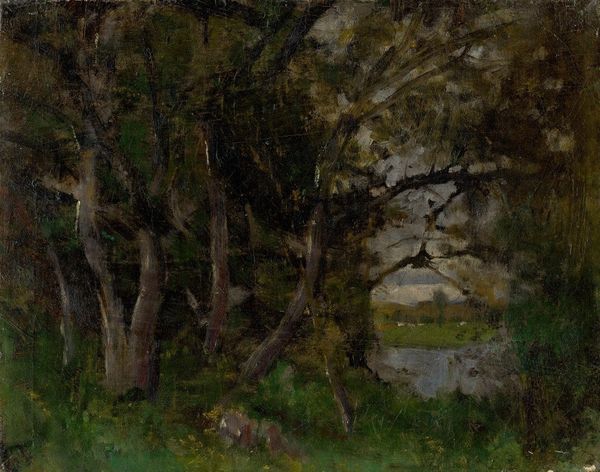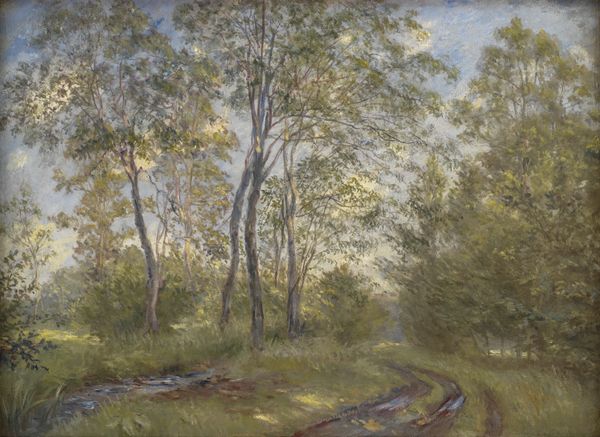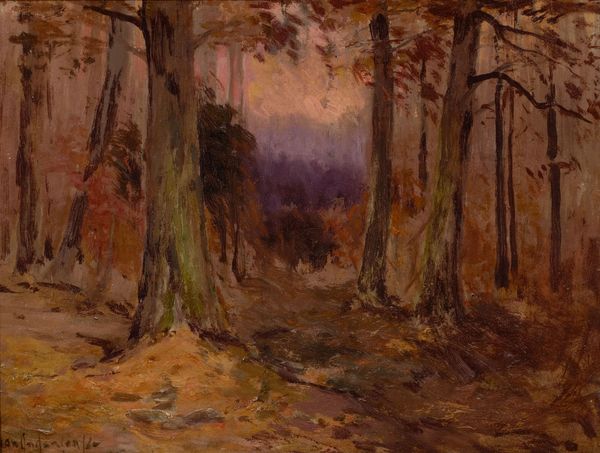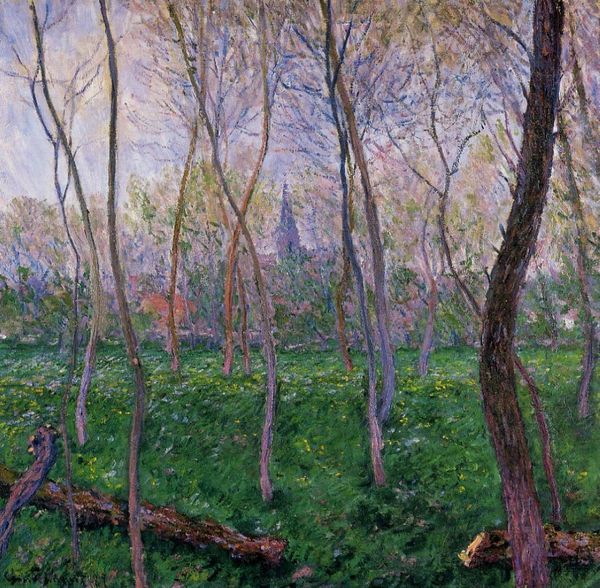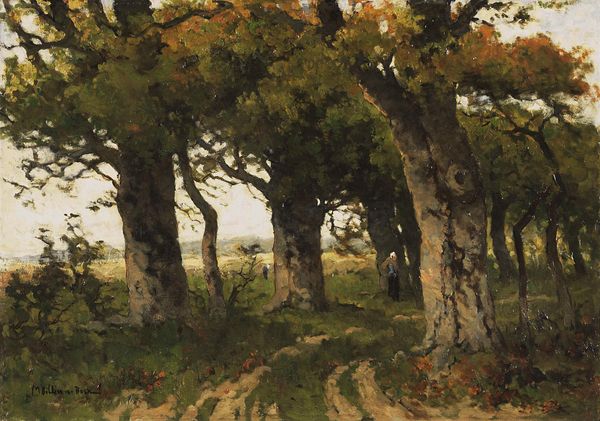
painting, plein-air, oil-paint
#
painting
#
impressionism
#
plein-air
#
oil-paint
#
landscape
#
impressionist landscape
#
forest
#
realism
Dimensions: height 46 cm, width 38 cm, depth 9.5 cm, weight 7 kg
Copyright: Rijks Museum: Open Domain
Curator: Before us, we have Théophile de Bock’s oil on canvas titled, “View in the Woods,” created sometime between 1870 and 1904. Editor: It feels somber, doesn't it? Almost gothic. The towering trees reach up like skeletal fingers against a veiled sky. Curator: It’s certainly evocative. De Bock was associated with the Hague School, part of the broader Realist movement, yet there’s a touch of Impressionism creeping in here with those looser brushstrokes and the way light flickers. His plein-air paintings like this really sought to capture nature's essence. The art market wanted rural scenes, but artists sought authenticity in painting them, working to catch impressions of the outside world. Editor: I'm struck by the flock of birds at the base of the trees, they almost feel like a heraldic symbol. Are crows frequently depicted in art of this era? I am wondering if de Bock is also making symbolic reference to the landscape. Perhaps they signal a transition, the end of the day. Or the cycle of life. Curator: Crows can definitely function as symbols of transition, even something darker. De Bock captures an ordinary scene, but endows it with weight through careful composition. The verticality of the trees leads the eye upward, creating a feeling of reverence. Did Dutch patrons appreciate his use of these kind of stark archetypes? Editor: Patrons often sought comfort and beauty in landscapes. Paintings like this also appealed to burgeoning sense of national pride, a celebration of the Dutch countryside. However, the darkness may challenge their conventional taste. I see De Bock engaging in something more ambiguous and powerful in mood. Curator: Yes, it does feel like de Bock wanted to show nature in its raw power and beauty. Looking closer, the thick application of paint adds to the sense of depth and texture, making the woods feel almost palpable. Editor: I think looking through de Bock's dark forest that we gain something of the artist himself. How his anxieties are projected, but then ultimately dissolved, through his deep connection to this rural landscape. It feels strangely familiar. Curator: Indeed, these crows and solemn groves evoke something buried deep in the Dutch cultural imagination. Perhaps its because paintings like these prompt viewers to remember the Netherlands is a land of great and imposing natural beauty.
Comments
No comments
Be the first to comment and join the conversation on the ultimate creative platform.
